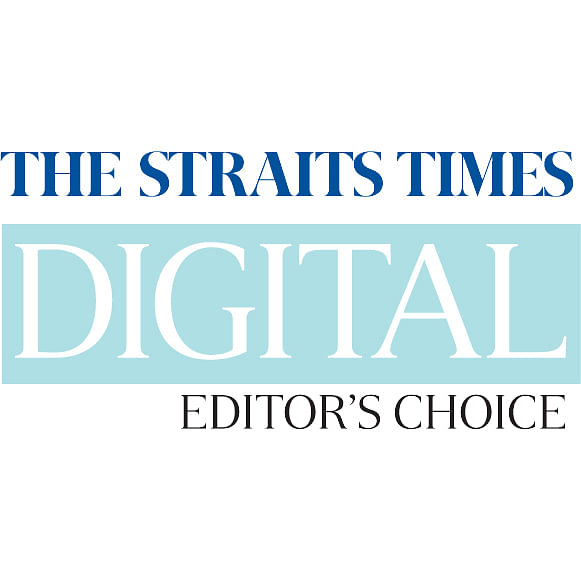Samsung's flagship phablet, the Galaxy Note8, takes the best bits of the premium Galaxy S8 line and makes everything about them even bigger and better - a killer display, excellent camera and fluid performance.
It is a worthy pickup for fans of the Note series who were deprived of last year's Note7, which was recalled globally by the South Korean firm because of battery issues that caused phones to catch fire.
The Note8 retains the signature infinity design that debuted with the S8 line, with the screen stretching from edge-to-edge and minimal bezels along the sides.
The 6.3-inch display - the largest so far in Samsung's smartphone repertoire - is a joy to behold, with great colour reproduction, detail and sharpness due to the Quad HD+ Super Amoled makeup.
I got used to the slightly stretched out 18.5:9 aspect ratio quickly enough, and the larger screen real estate probably won't bother users too much when videos and multimedia look so immersive. Good news for streaming junkies as well - apps such as Netflix and YouTube are rolling out high-dynamic-range support to the phone, giving videos deeper contrast and richer colours.
The phone's length, while playing a huge role in how impressive the screen looks, can be quite intimidating upon first handling, although, over time, I got used to the size.
The squarish corners and less curved edges also make the Note8 easier to grip - which is a boon, given that the phone's large size can make it awkward to hold at times.

-
TECH SPECS
-
PRICE: $1,398
PROCESSOR: Exynos 8895 (Quad-core 2.3 GHz and quad-core 1.7 GHz)
DISPLAY: 6.3-inch, Quad HD+ Super Amoled, 2,960 x 1,440, 521 ppi pixel density
OPERATING SYSTEM: Android 7.1.1
CAMERA: 12MP, f/1.7 wide-angle, 12MP f/2.4 telephoto (rear); 8MP, f/1.7 (front)
MEMORY: 64GB (microSD expandable up to 256GB), 6GB RAM
BATTERY: Non-removable 3, 300 mAh
RATING
FEATURES: 5/5
DESIGN: 5/5
PERFORMANCE: 5/5
BATTERY LIFE: 4/5
VALUE FOR MONEY: 3/5
OVERALL: 5/5
But it can, in several situations, be too long. A little bit of the top sticks out from my jeans pocket, a problem that's likely to be exacerbated if you slap a case on it and add even more height to the phone.
Powering the display and the rest of the phone are some of the highest-end specs you'll find in modern flagships - an octa-core Exynos 8895 processor chip, along with 6GB of RAM, resulting in smooth, lag-free performance even with multiple apps running concurrently.
This allows the Note8 to shine while running split-screen apps, as the large screen size gives you enough room to have, say, a YouTube video running on top while texting away on the bottom, with the same level of performance as if you had only one app running.
The Note8 is the first Samsung phone with two rear cameras - a f/1.7 wide-angle lens and an f/2.4 telephoto lens. As expected, the photos taken by the Note8 are top-notch, with vivid, vibrant colours, intense level of detail, and crystal-clear sharpness.
My only minor quibble is that photos can sometimes look too unnaturally sharp and vivid, which gives them a harsh, hard edge, due to Samsung's overzealous post-processing software.
A new feature available only on the Note8, called Live Focus, makes use of the dual-camera set-up to take professional-looking photos by allowing users to adjust the level of background blur while keeping the subject clear and in focus, giving photos the nice, faded background look that DSLR cameras produce.
The more I use this mode, the more impressed I am with it. There were times when I left my mirrorless camera at home because I know I can simulate the bokeh effect reasonably well on the Note8, which is sufficient for a quick post on Instagram or Facebook.
But there is one major caveat - it does not perform spectacularly well in low or indoor lighting, with noticeable noise and loss of detail on the subject, as it uses the telephoto lens with f/2.4 aperture, which lets less light in.
The S Pen is fluid and responsive, allowing for much finer control due to a more sensitive tip that resembles that of a real pen.
I was not much of a stylus user prior to the Note8, but have come to appreciate the little quality of life upgrades it offers to everyday use, such as scribbling quick reminder notes and pinning them to the lock screen to have a ready to-do list with a glance at my screen.
Rounding off the list of high-end features are support for wireless charging, water resistance at a depth of 1.5m for 30min, and external storage via microSD card.
The closest competitor to the Note8 is actually Samsung's own S8+, released just this April. What will edge consumers towards the Note8 will be the phone's dual cameras and stylus use.
Price is another factor: the Note8 runs close to $1,400 under retail pricing, which can get you a full-fledged laptop.
Another consideration to note is the Note8's smaller battery - 3,300mAh, compared with the S8+'s 3,500mAh. Couple that with the slightly larger display size, and battery life for daily use might be just a bit worse than what you can eke out from the S8+.
Reviewers worldwide - myself included - have had access to the phone for almost a month now, and battery problems have yet to surface. Samsung might be heaving a sigh of relief, although even the slightest and most isolated incidents will garner heavy attention.
Those still on the fence about their phablet of choice might want to wait till next month before making a decision, as other premium phablets from the likes of Apple, LG and Huawei are due to be announced then. At this point, the Note8 is shaping up to be the industry standard those brands are aiming to beat. Early adopters for a flagship Android device won't regret it.
• Verdict: Samsung has, quite easily, taken over the phablet market with the Note8. With its large screen, high-end cameras and premium specs, the Note8 looks set to be the phablet to beat so far this year.


